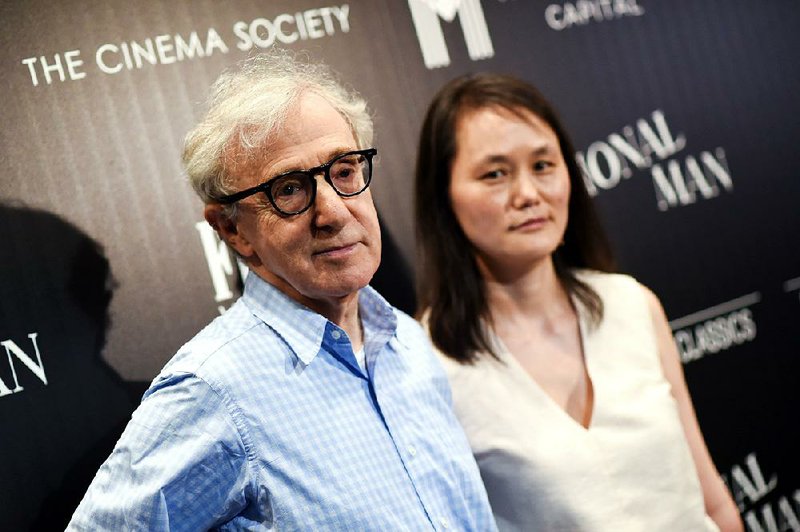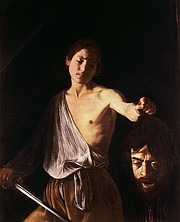"We know that a man can read Goethe or Rilke in the evening, that he can play Bach and Schubert, and go to his day's work at Auschwitz in the morning."
-- George Steiner, Language and Silence: Essays 1958-1966
Let's make one thing clear: Anyone can be accused of anything.
But let's also acknowledge that if you smell smoke, it is fair to wonder if something isn't burning. When a person comes forward to accuse another person of bad behavior, we might be able to think of all kinds of reasons why they might be lying. They might be bad people, looking to damage a good person's reputation. They might have misunderstood someone's awkward but benignly meant actions. They might be crazy.
And they might be telling the truth.
Most of us initially believe whatever makes us feel best about ourselves in these situations. If a woman came forward and accused Tom Hanks of being a jerk I would resist that idea based both on things that shouldn't matter (like the persona Hanks has created) and things that should (like the reputation that he has earned). While I'm sure Hanks is not perfect, and that there have been isolated incidents in his life that, if presented out of context, might make him look bad, I prefer to think that he's a mensch.
I'd have to see some pretty convincing evidence to the contrary to change my opinion of Hanks, and for reasons I'm not sure I completely understand, it would probably be painful.
On the other hand, I have no problem believing that Pablo Picasso was a terrible human being, or that Woody Allen and Roman Polanski have committed horrible acts. All I know about these figures is what has been publicly aired.
Picasso is dead and Polanski, who pleaded guilty to statutory rape charges, has been a fugitive from the U.S. justice system since 1978. But Allen has never been indicted or convicted of anything.
In 1992, in the midst of a bitter break-up and custody battle, Allen was accused by Mia Farrow of molesting their adoptive daughter Dylan, then 7 years old. Allen denied the allegations and prosecutors, citing a lack of evidence, declined to press charges. (More precisely, the Connecticut state prosecutor on the case said that while he felt there was probable cause to charge Allen, he decided not to because he feared that a celebrity trial would not be in Dylan's best interests.)
Allen has always denied those charges and alleged that a bitter and vindictive Mia Farrow coached Dylan to say terrible things about him. Moses Farrow, Mia and Woody's adoptive son who was 13 at the time of the alleged molestation, has spoken out to defend his father. Ronan Farrow -- Woody and Mia's biological son, 4 years old at the time -- has said he believes his sister and supports his mother.
Obviously only a very few people can know with certainty whether Allen is a child molester. But we do know that his breakup with Farrow was precipitated by his affair with her adoptive daughter Soon-Yi Previn (22 years old in 1992). Farrow has said she found out about the affair because she stumbled across nude photos of her daughter taken by Allen.
Allen was never Soon-Yi's adoptive father, but he was her mother's long-term partner, and as the adoptive parent of three of her siblings, a father figure in the household. Even without the allegations of child molestation, having an affair with one's girlfriend's adoptive daughter feels a little off.
As a 10-year-old Ronan put it in 1997 after Allen and Previn were married: "He's my father married to my sister. That makes me his son and his brother-in-law. That is such a moral transgression ... I cannot have a relationship with my father and be morally consistent."
(Lest you think that quote a little precocious, consider Ronan graduated from Bard College with a degree in philosophy at the age of 15, graduated from Yale Law School at 21 and wrote the stories in the New Yorker detailing the sexual abuse allegations against Harvey Weinstein for which he shared the 2018 Pulitzer Prize for Public Service with The New York Times.)
Allen's answer? He told Time's Walter Isaacson: "The heart wants what it wants. There's no logic to those things. You meet someone and you fall in love and that's that."
. . .
Allen has a new movie in the can, A Rainy Day in New York. It's not coming out anytime soon.
His publicist says it's coming out next year, that it will be in theaters, but maybe not.
Amazon Studios, which financed it as part of a high-profile deal it made with Allen in 2015, has the distribution rights. It has shelved the project, with no plans to release it theatrically or on its streaming service. Back in January, two of the actors who worked on the film, Timothee Chalamat and Rebecca Hall, donated their salaries for working on the film to the organization Time's Up.
Greta Gerwig, who worked with Allen on 2012's To Rome With Love, now says she regrets having worked with him.
"It is something that I take very seriously and have been thinking deeply about," she told The New York Times in January. "And it has taken me time to gather my thoughts and say what I mean to say. I can only speak for myself and what I've come to is this: If I had known then what I know now, I would not have acted in the film. I have not worked for him again, and I will not work for him again ... I grew up on his movies, and they have informed me as an artist, and I cannot change that fact now, but I can make different decisions moving forward."
It is possible to hold conflicting ideas in your mind. Bad people can make good art. Sometimes their badness makes their work better, or at least more interesting.
. . .
You no doubt have seen David With the Head of Goliath, a circa 1610 painting by Michelangelo Merisi, the Italian Baroque artist known as Caravaggio. The painting depicts young David, his tunic askew, regarding the severed head of the giant, which he holds in his left hand. What raises this painting above the orthodox Christian iconography of the period is that it's not a simple depiction of good triumphing over evil. David regards Goliath's head pensively, with an expression that might be read as resignation, wistfulness or remorse. In any case, David is not jubilant.
The face of the giant is widely believed to be a self-portrait of the artist. There are a couple of theories about the model for David, whom Caravaggio referred to in his notes as il suo Caravaggino ("his own little Caravaggio"). The more mundane holds that it's a portrait of Caravaggio's studio assistant and lover. (The unknown artist referred to as "Cecco del Caravaggio.") Alternately, it has been suggested it's a portrait of the artist himself as a young man, implying that youthful folly murdered adult ambition.
This interpretation is bolstered somewhat by the story behind the painting.
In 1606, Caravaggio stabbed the wealthy pimp Ranuccio Tomassoni to death in Naples. The flash point for the murder was a disputed tennis game the men had bet on, but it seems likely that Caravaggio and Tomassoni had an ongoing and tempestuous relationship.
Two of Tomassoni's prostitutes were models for Caravaggio. Caravaggio was also said to have aggressively flirted with the pimp's wife. Tomassoni died by bleeding to death through the femoral artery in his groin; Caravaggio biographer Monsignor Sandro Corradini believes Caravaggio pinned Tomassoni to the ground with his sword then made a bungled attempt to castrate him. That was something that happened in Italian street fights back then.
In any case, Caravaggio was charged with murder. So he fled to Malta where he was granted asylum and ordained as a Knight of St. John of Jerusalem. But he screwed that up when got in another fight, stabbed one of the most senior knights of the order, and was imprisoned. He managed to escape. While on the run he painted David With the Head of Goliath, which he sent to his old patron Roman Catholic Cardinal Scipione Borghese as a request for a papal pardon.
He never got it and died the same year he completed David, under mysterious circumstances in Tuscany, while en route to Rome to receive a pardon from the Pope.
. . .
I think Caravaggio was a better painter for being a murderous thug. Maybe this isn't a controversial statement given the centuries that insulate us from violence. Maybe if someone suggested Woody Allen was a more interesting artist for following his transgressive heart there might be blowback.
Allen is not a criminal. Aside from the (admittedly major) controversies surrounding the way he has conducted his private life, he has never been accused of anything like what Harvey Weinstein, Les Moonves and others have been.
Does he deserve our opprobrium? It depends. What do we want to believe about him?
Email:
pmartin@arkansasonline.com
blooddirtangels.com
Style on 09/23/2018

